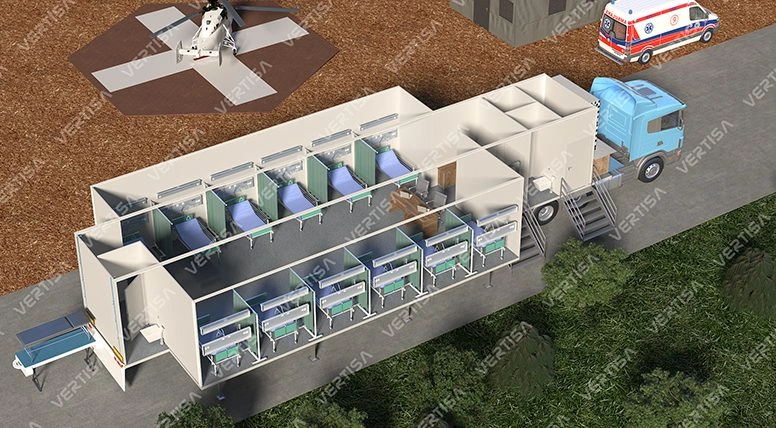
The healthcare world has sought solutions that are much faster and more accessible due to the increasing population, emerging new diseases and urgent health problems that require on-site intervention. At this point, efforts to reach patients faster have enabled the development of technologies in the health sector. Mobile Hospitals are at the top of these technologies. Mobile hospitals are portable hospital structures that facilitate the delivery of on-site health services. Thanks to mobile hospitals, which can be established in a very short time at the desired location with very economical budgets, people can easily benefit from health services.
Mobile Hospital Usage Areas
The usage areas of mobile hospitals, which are established to provide health services in pandemics, natural disasters, insufficiency of hospitals or in places where access to hospitals is difficult, are quite extensive. Firstly, mobile clinics were established in certain regions for military areas, gendarmerie and police stations. Then, after natural disasters such as floods, earthquakes, and fires, mobile hospitals were created to be able to intervene immediately. Serious patients, who could not go to the hospital, started to be treated in mobile hospitals. Mobile cancer screening units and mobile dialysis units were created to provide early cancer diagnosis and treatment. During the pandemic period, the use of mobile hospitals increased much more as the hospital capacities were full. Therefore, in a changing and developing world, the increasing need for healthcare has enabled mobile hospitals to reach all areas.
Mobile Hospital Purposes
Among the purposes of use of mobile hospitals, emergency intervention to patients, accelerating access to hospitals, providing on-site treatment to people who have diseases that are treated but cannot go to hospital during treatment, providing health services to patients after natural disasters, and eliminating hospital insufficiency during epidemic periods can be listed. In short, it is the purpose of mobile hospitals to accelerate the interventions and to fill the gap of inadequate hospitals.
